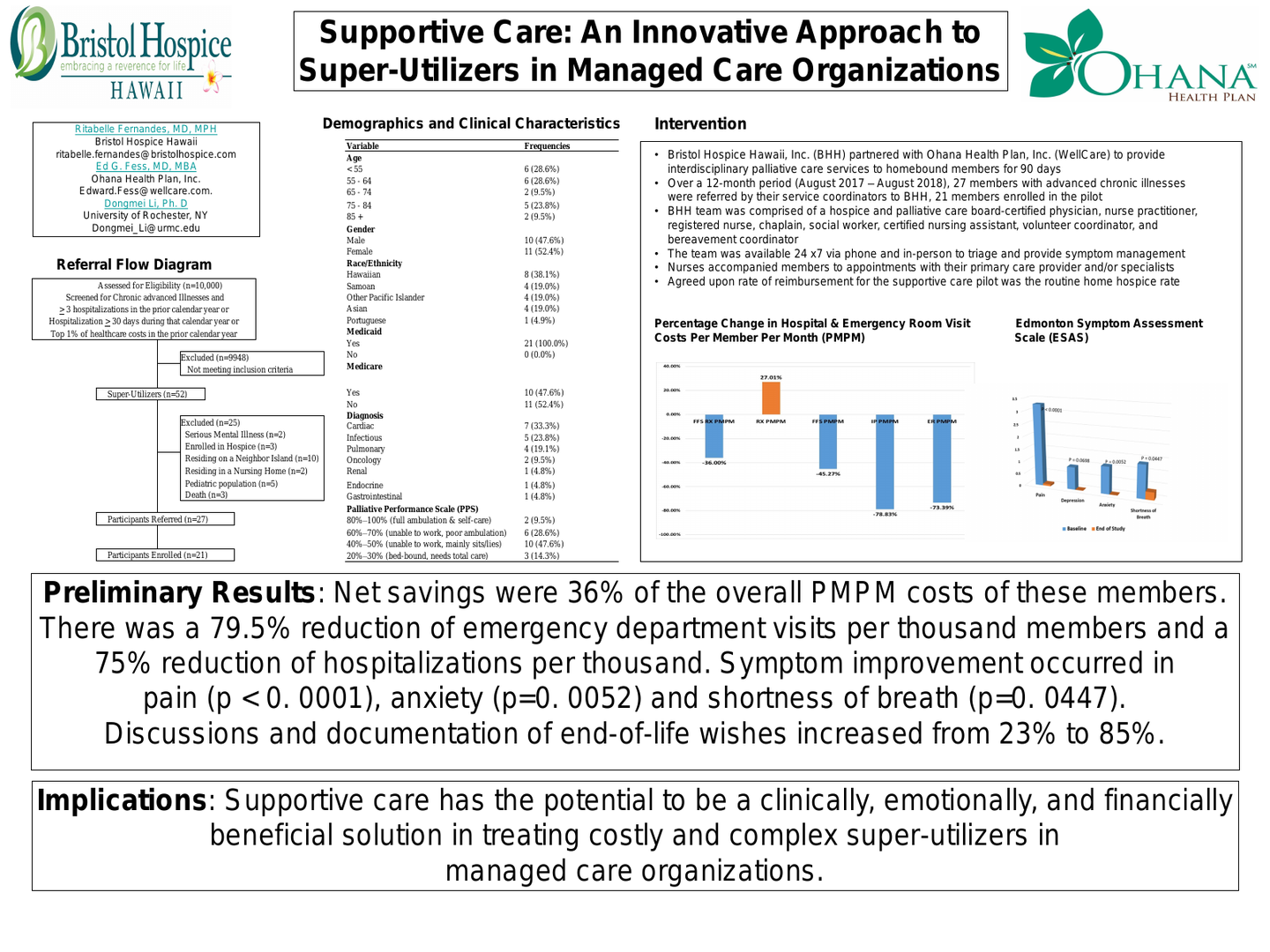Supportive Care: An Innovative Approach For Super-Utilizers in Managed Care Organizations
Learning Objectives: Understand the characteristics of super-utilizers in a managed care organization. Describe supportive care approaches in an outpatient community setting.
Background: Ohana Health Plan, Inc. (OHP) is one of the first managed care organizations offering supportive care services targeted to super-utilizers. OHP is offered by WellCare Health Insurance of Arizona, Inc. (WellCare) and its mission is based on improving the lives of their members, including a commitment to quality care. Bristol Hospice Hawaii, Inc. partnered with OHP to provide interdisciplinary supportive care services to homebound OHP members.
Research Objectives: The purpose of this study was to measure symptom relief, satisfaction, resource utilization, and cost savings associated with supportive care services.
Design: Prospective study.
Methods: Over a 12-month period (August 2017–August 2018), 27 members with advanced chronic illnesses were referred by their service coordinators to BHH. These members were identified through claims utilization data as having greater than three hospitalizations in the past year with at least one prolonged length of stay. Data were collected from members and caregivers upon admission to the supportive care pilot and repeatedly thereafter using the Edmonton Symptom Assessment Scale (ESAS) and the Missoula Vitas Quality of Life (MVQOLI). The Family Satisfaction with Advanced Cancer Care (FAMCARE) was administered at discharge. Emergency department and hospitalization utilization was tracked.
Results: The median age was 63 years; more than half had cardiac diagnoses. Majority of members were Hawaiian and other pacific islander. Median length of stay in supportive care was 90 days. Five (23%) members enrolled in hospice following supportive care. Symptom improvement occurred in pain (p < 0.0001), anxiety (p=0.0052) and shortness of breath (p=0.0447). Discussions and documentation of end-of-life wishes increased from 23% to 85%. During this period there was a 112.6% increase in all types of outpatient visit costs per member per month (PMPM) as well as a 27% increase in pharmacy costs on a PMPM basis. When all costs were deducted from the savings realized by the reduction in emergency department visits and inpatient admissions, the net savings were 40% of the overall PMPM costs of these patients.
Conclusion: Supportive care was found to be an effective and welcomed service provided to super-utilizers of a health plan by a contracted hospice provider in Hawaii. Our experience demonstrates the effectiveness of supportive care approaches in this population to provide improved whole-person care and in lowering overall healthcare costs.
Implications: Supportive care has the potential to be a clinically, emotionally, and financially beneficial solution in treating costly and complex super-utilizers in managed care organizations.
Author
Ritabelle Fernandes, MD, MPH
Associate Professor
Division of Palliative Medicine, Department of Geriatric Medicine
John A. Burns School of Medicine
University of Hawaii
347 N. Kuakini Street, HPM-9
Honolulu, HI 96706
(808) 523-8461
